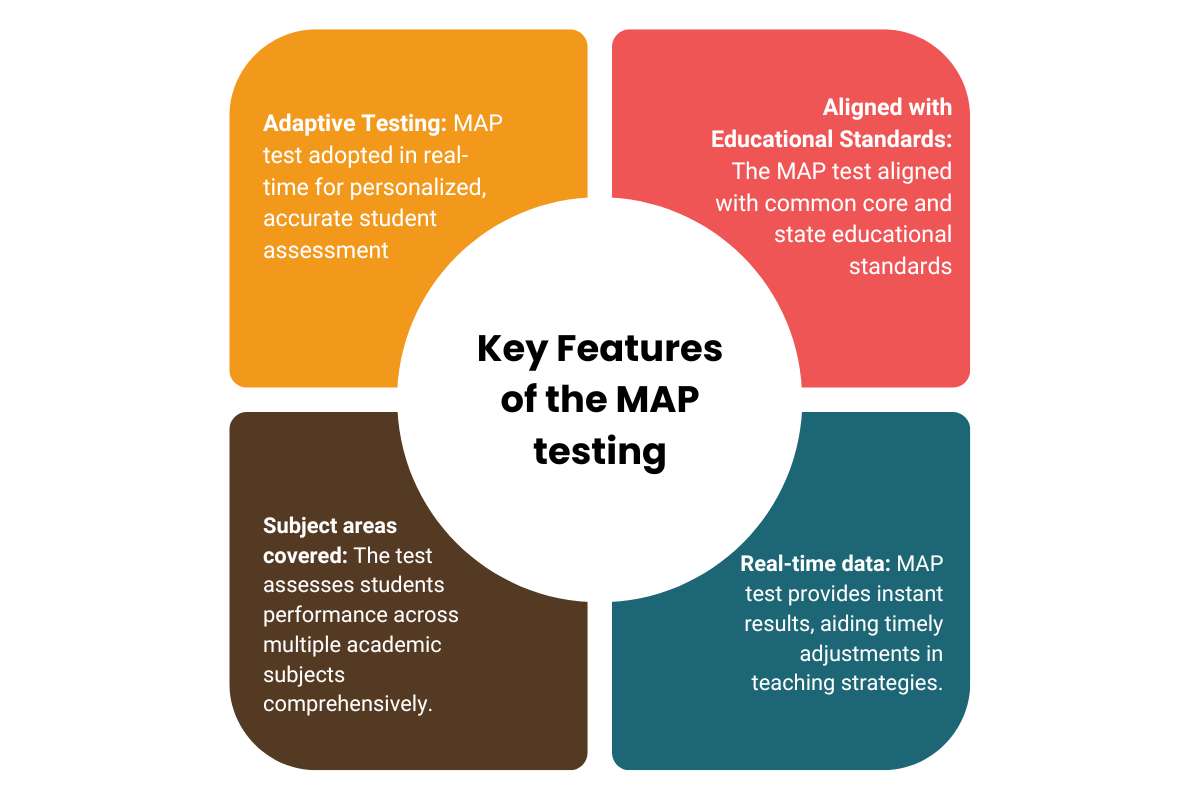With the help of data-driven tools, education has turned out to be a means of providing insight into student learning. One of the most effective tools is the MAP assessment test – short for Measures of Academic Progress – which is used in schools to check academic progress and has a personalized feel. This blog will explore what the MAP assessment test is, the features of this test, the benefits it offers, how it supports educators and students, and why it’s such an essential part of today’s educational landscape.
What is the MAP Assessment Test?

Northwest Evaluation Association, NWEA designed the MAP test. The testing evaluates the student’s progress in math, reading, language usage, and sometimes science. Since MAP testing is adaptive, as a student answers questions, the test adjusts difficulty based on student performance. If a student correctly answers a question, the following question becomes more challenging. If they answer incorrectly, the next question will be less demanding. This assessment pattern makes it a unique tool for researching student growth in the academic domain. The MAP testing can be taken several times a year, and it provides educators with real-time data that allows them to track student growth over time.
Key Features of the MAP testing
There are several key features of the MAP test:

Benefits of the MAP Testing for Students and Educators
The MAP testing is beneficial not just for educators but also for students and parents. Its personalized approach and data-driven insights make it a crucial tool for modern education. Let’s explore some of the key benefits:
- Personalized Learning Plans: The adaptive nature of the test provides a more accurate picture of what students know and what they are ready to learn next. This allows teachers to create personalized learning plans that can address student’s strengths and areas for improvement.
- Goal Setting and Growth Tracking: Educators can track student’s growth over time. With this feature, you can set individual goals for your child for academic development.
- Immediate Feedback: With immediate results, teachers can view student’s performance right after the test and use the data to inform their instruction.
- Parental Involvement: Parents are also beneficiaries of the MAP testing. The clear and concise reports generated from the test provide valuable insights into their child’s academic progress. These reports help parents understand where their child excels and where they may need additional support, fostering better communication between parents and teachers.
How does the MAP Assessment Test support educators?

Educators have a lot on their plates, from managing classrooms to meeting academic standards. The map testing can significantly ease some of these pressures by offering reliable, actionable data that teachers can use to tailor their lessons and teaching strategies.
- Data-Driven Instruction: Among the critical features that MAP testing can offer to teachers is its support in providing data-driven instruction. Using the data taken from the MAP test, teachers will not guess or use general assessments but delve into where a student may improve or exceed.
- Differentiated Instruction: With personalized data in hand, teachers can differentiate their instruction to meet the diverse needs of their students. For instance, a student performing well in reading but struggling in math might receive targeted support in math while continuing to excel in reading. This differentiated instruction is essential for creating an inclusive and effective learning environment.
- Progress Monitoring: Since MAP testing is conducted several times during the school year, it affords the teacher with a point-in-time view of student learning. Each period test can be compared to determine if the student is making sufficient progress or if the teaching approach is modified.
Challenges of the MAP testing
While MAP testing offers numerous benefits, it is not without its challenges. As with any testing system, there are limitations and considerations that schools, teachers, and parents should keep in mind.
- Test Fatigue: The test is adaptive and continues to be taken until it can arrive at a fair evaluation of the student’s skills. Due to this, by the time students complete their tests, they can get mentally fatigued. This may also result in poor scores, more so for students who are already getting bombarded with questions that are too challenging to answer.
- Overemphasis on Data: While data-informed instruction is important, it is also important not to forget that the student’s numbers and scores do not present the total capabilities of the student. Students should be evaluated by the MAP test as just one of many tools used to measure learning effectiveness; this includes other evaluations such as class participation, homework, and projects.
- Access and Equity: No schools have equal access to technology, which would limit the use of MAP testing; apart from this, they might vary based on the experience of students with technology-based tests, again depending on economic status.
Conclusion
The MAP assessment test is a valuable tool for measuring academic progress in a personalized and adaptive manner. It can provide instant feedback, trace student growth, and inform data-driven instruction. This makes it one of the core assets in modern education. Despite how challenging the test may be to accommodate, the benefits it presents to educators, students, and parents greatly outweigh its disadvantageous drawbacks. Schools can thus formulate more effective learning environments in which each student will get the support that they need to succeed academically using the insights from MAP testing.










